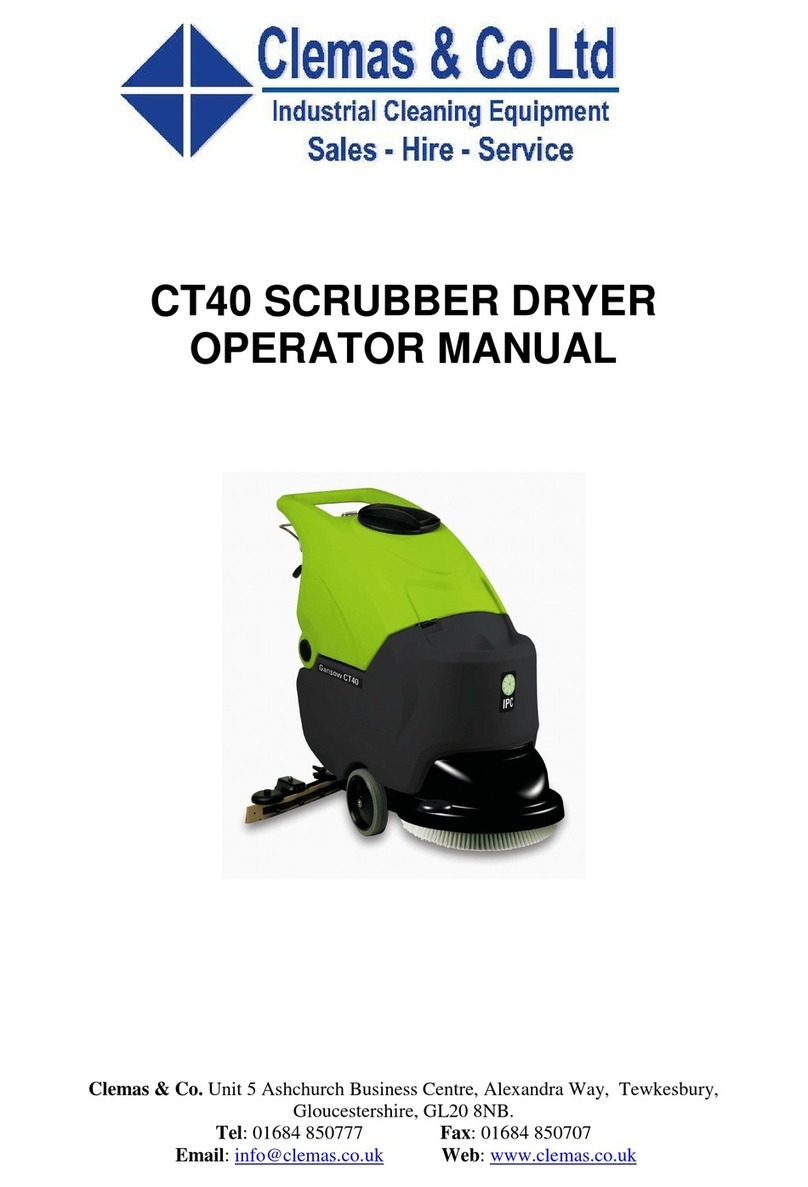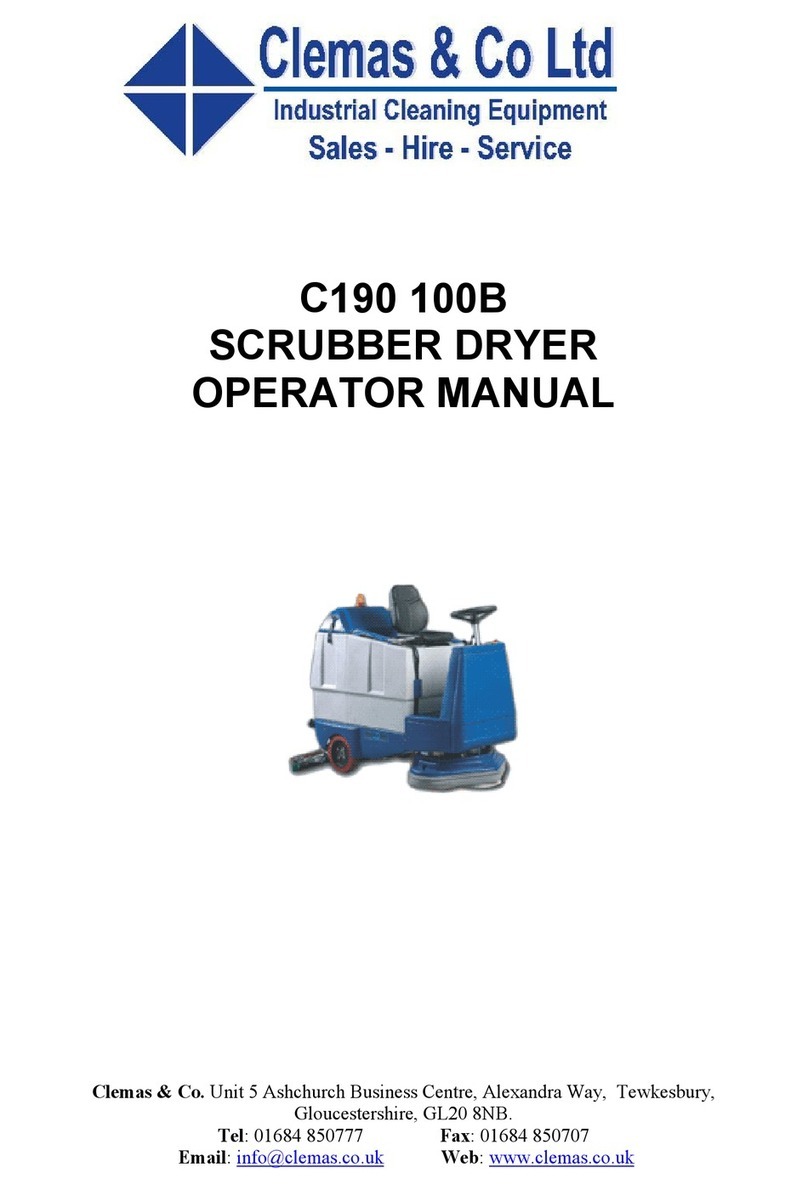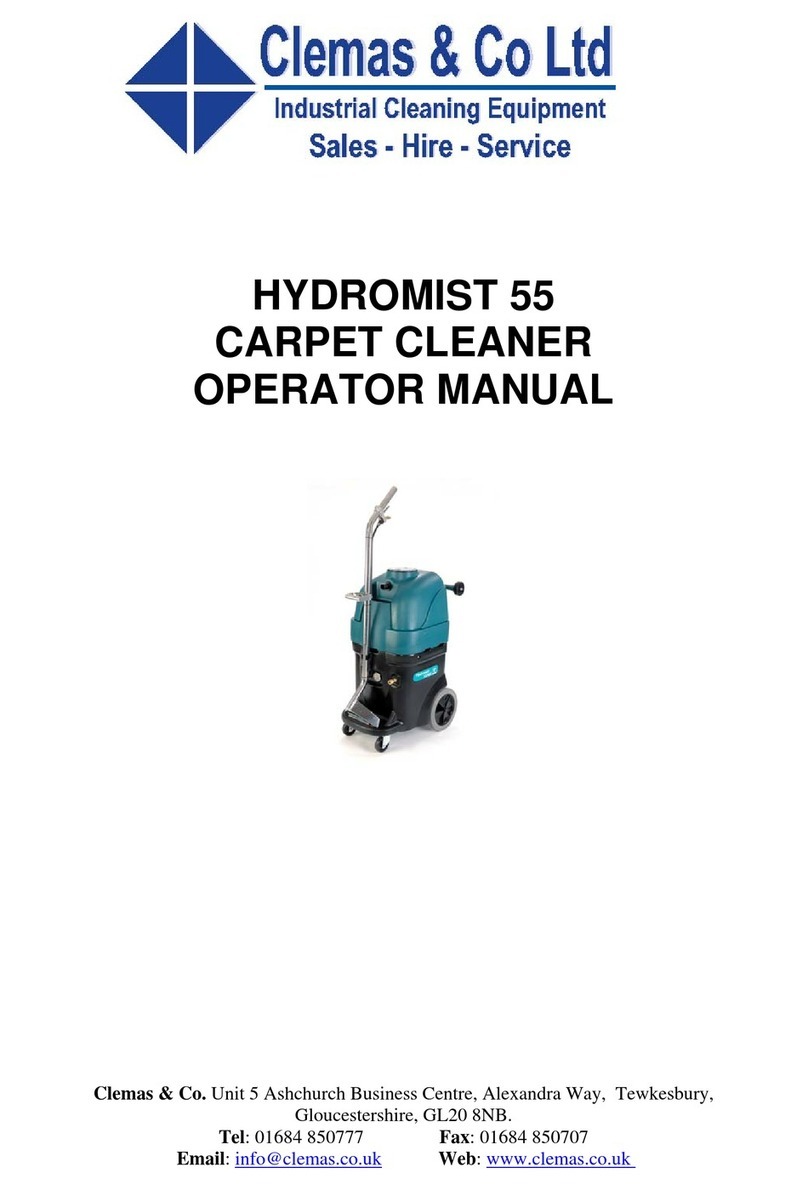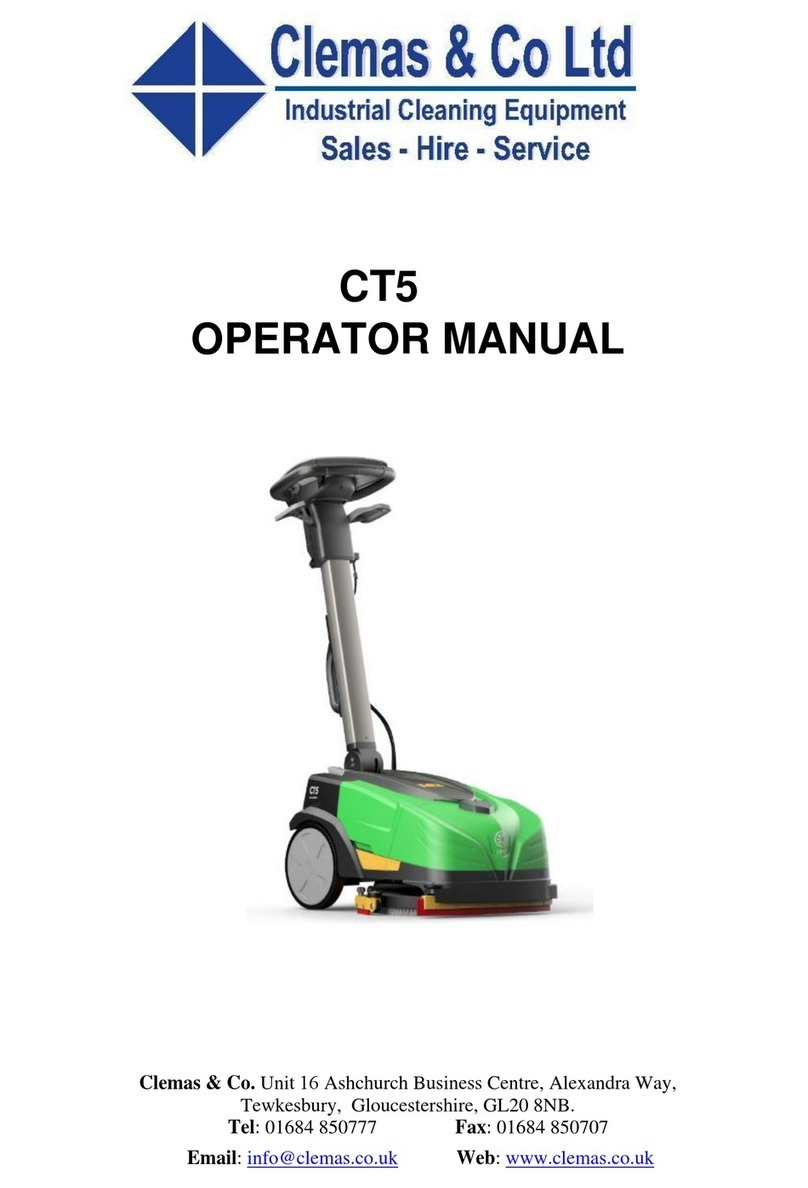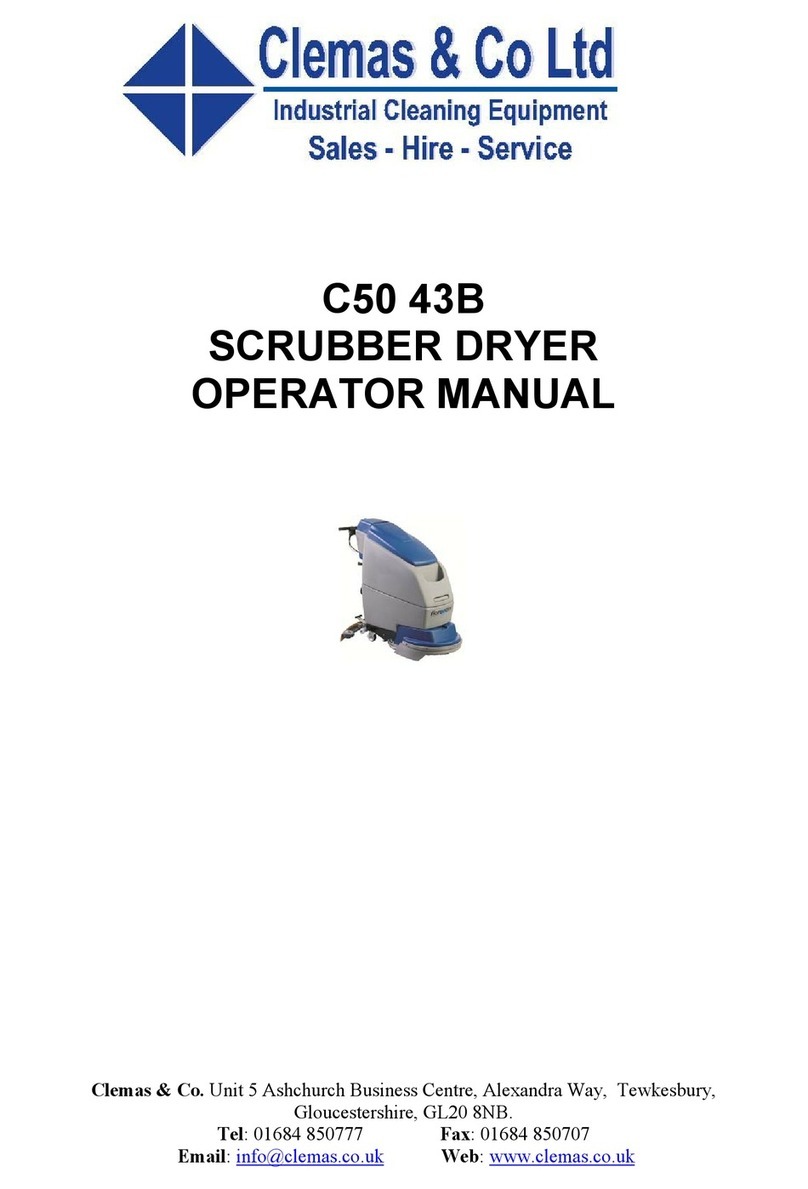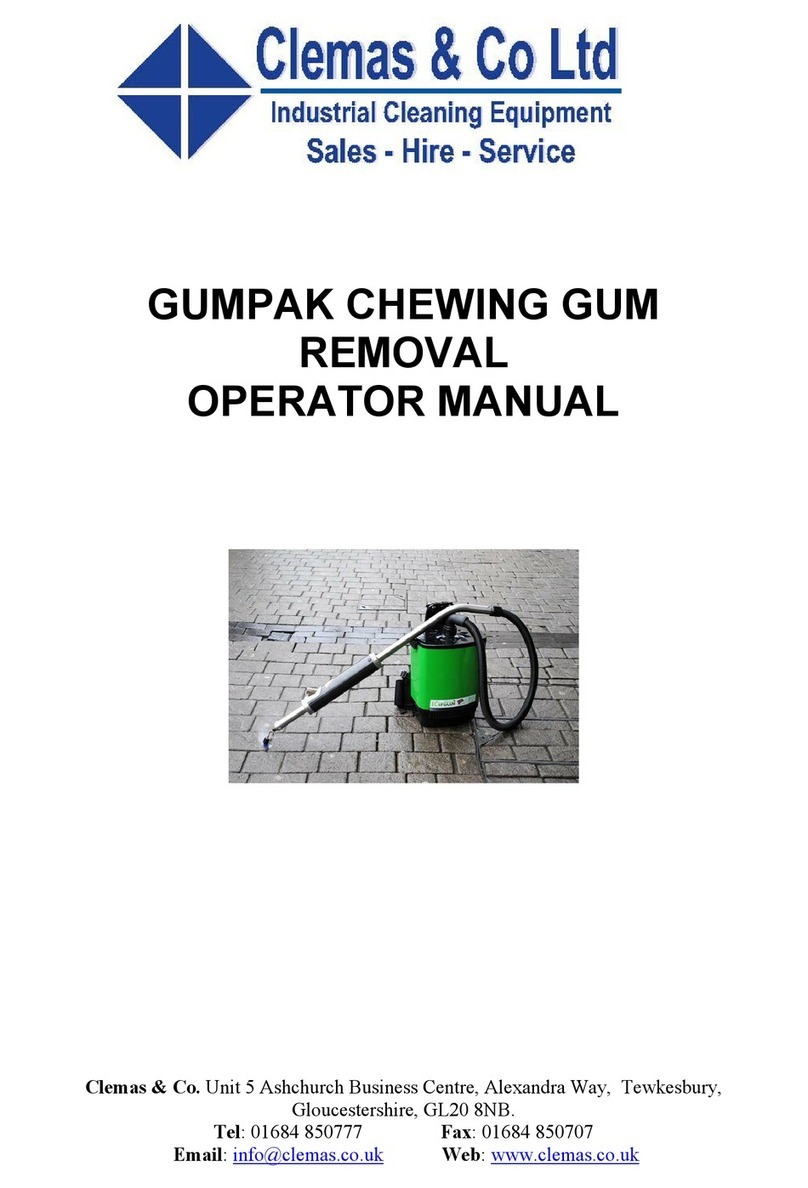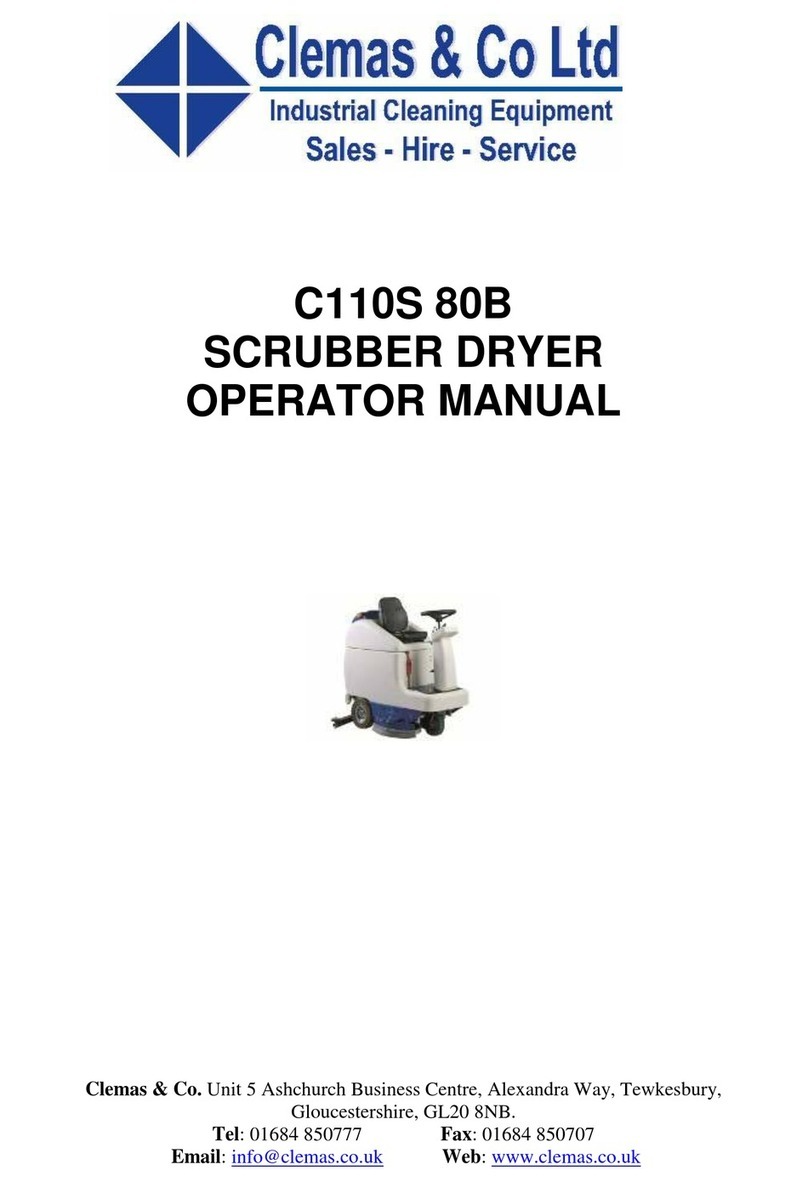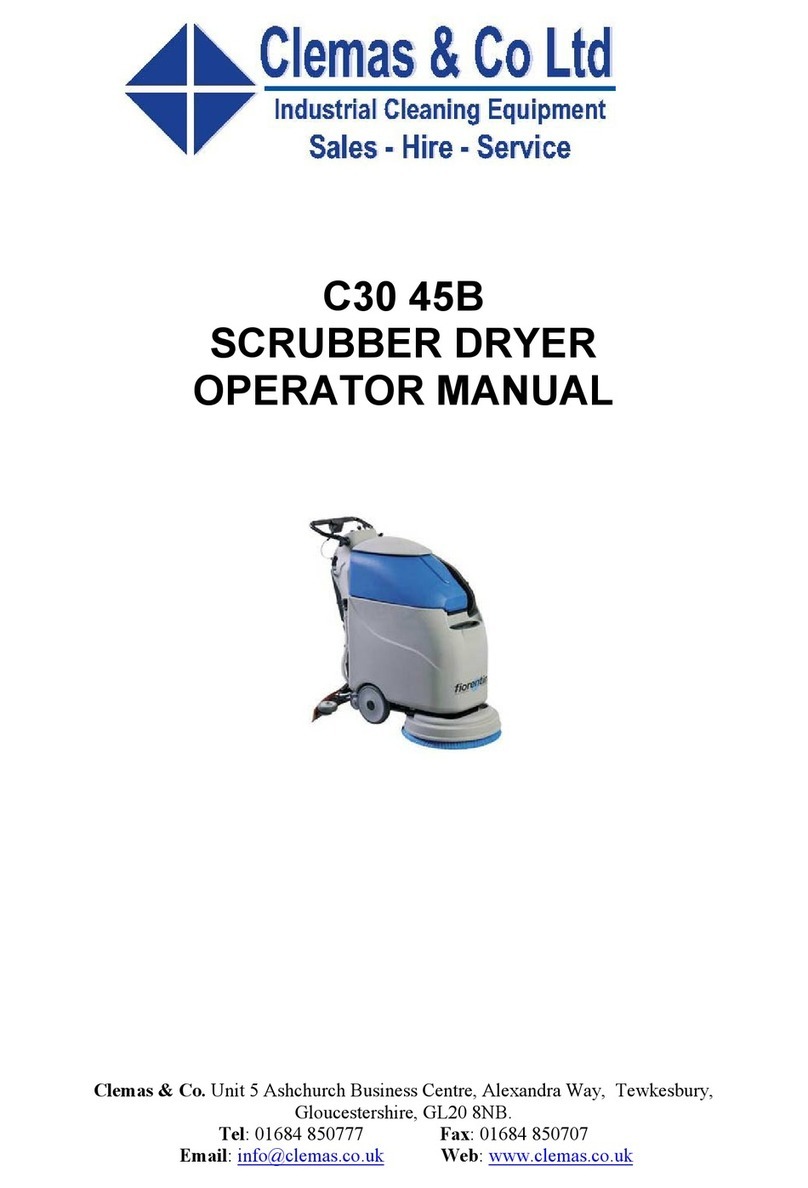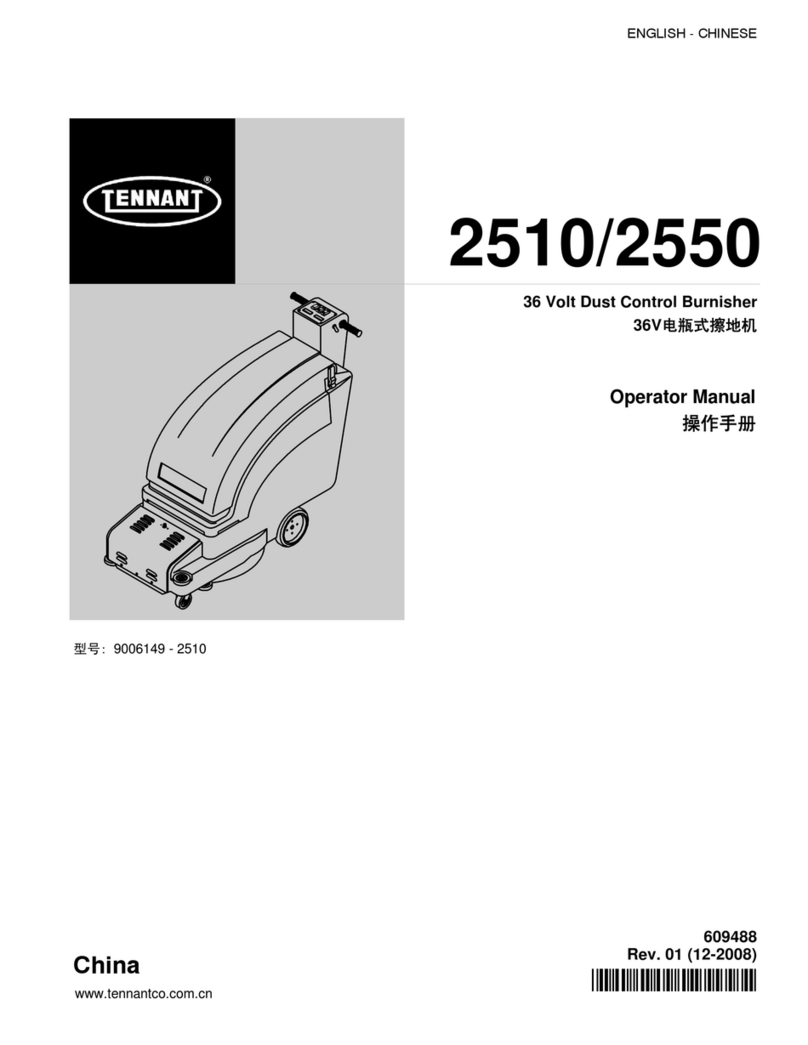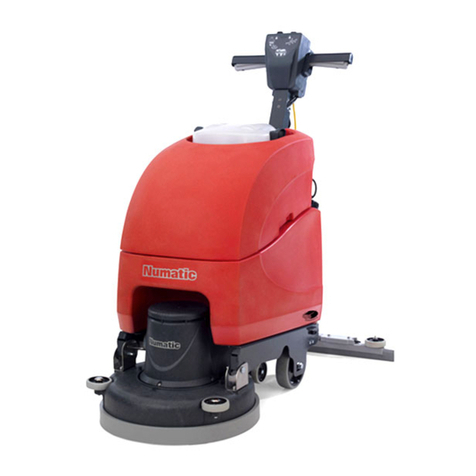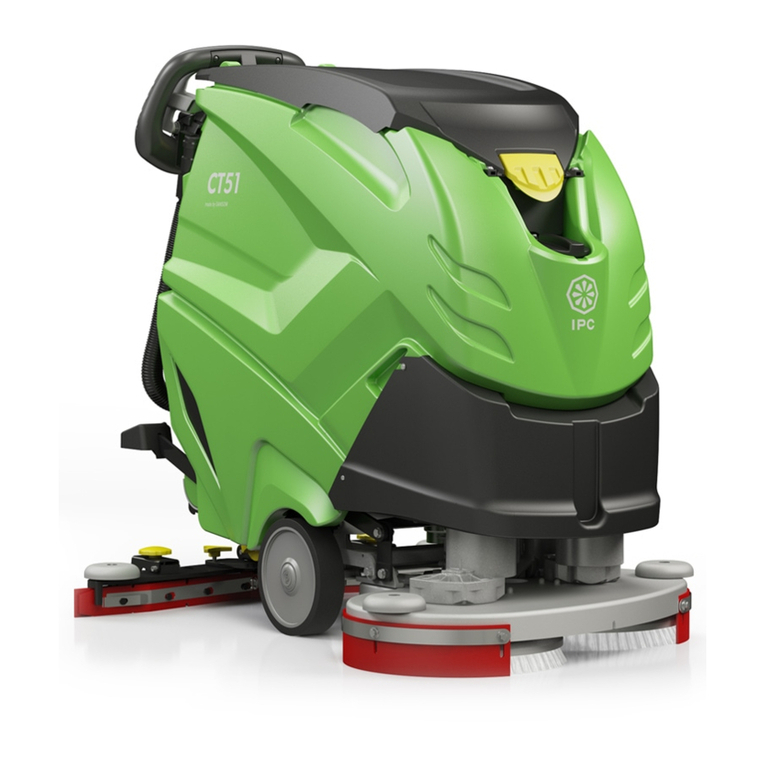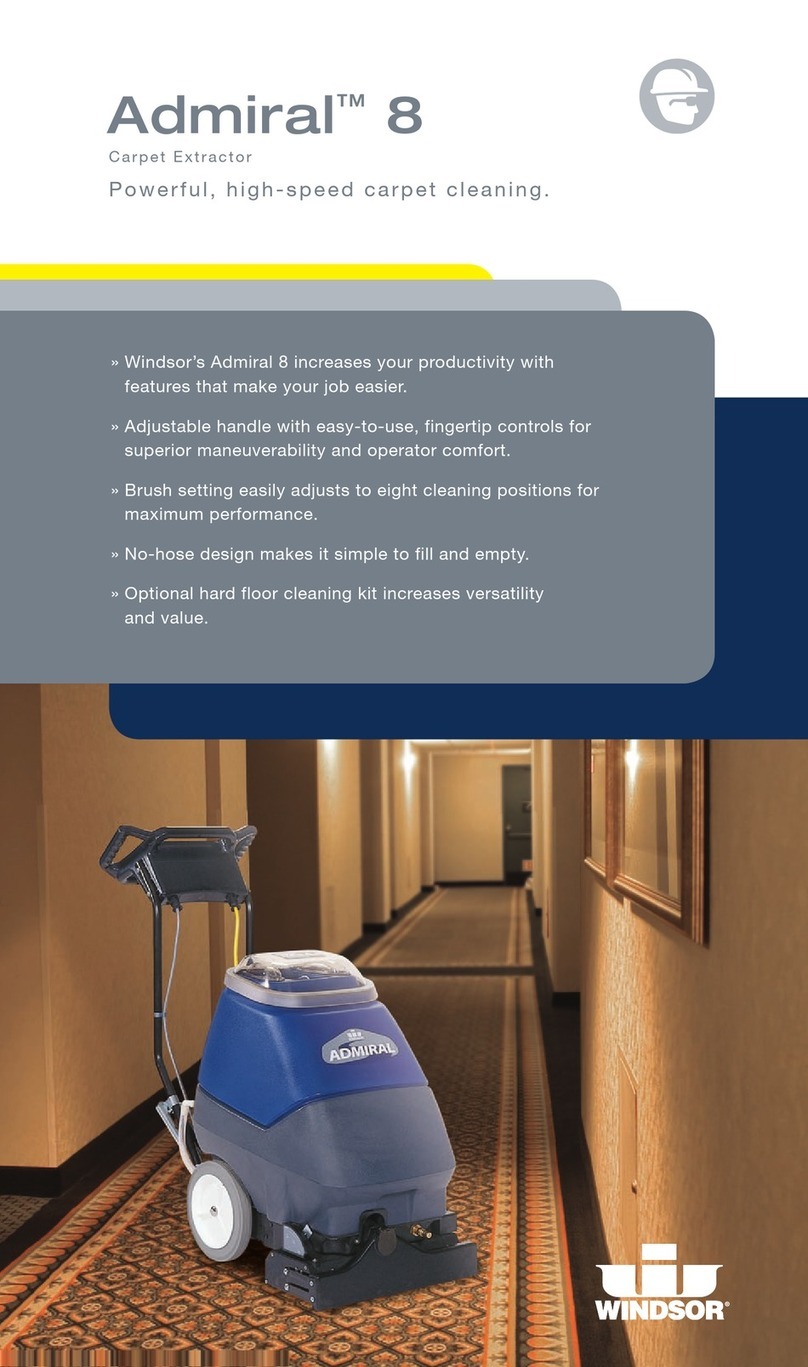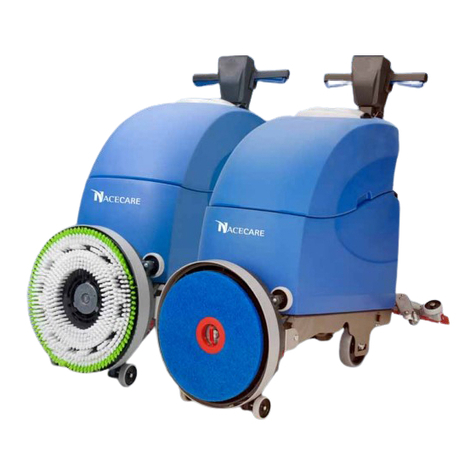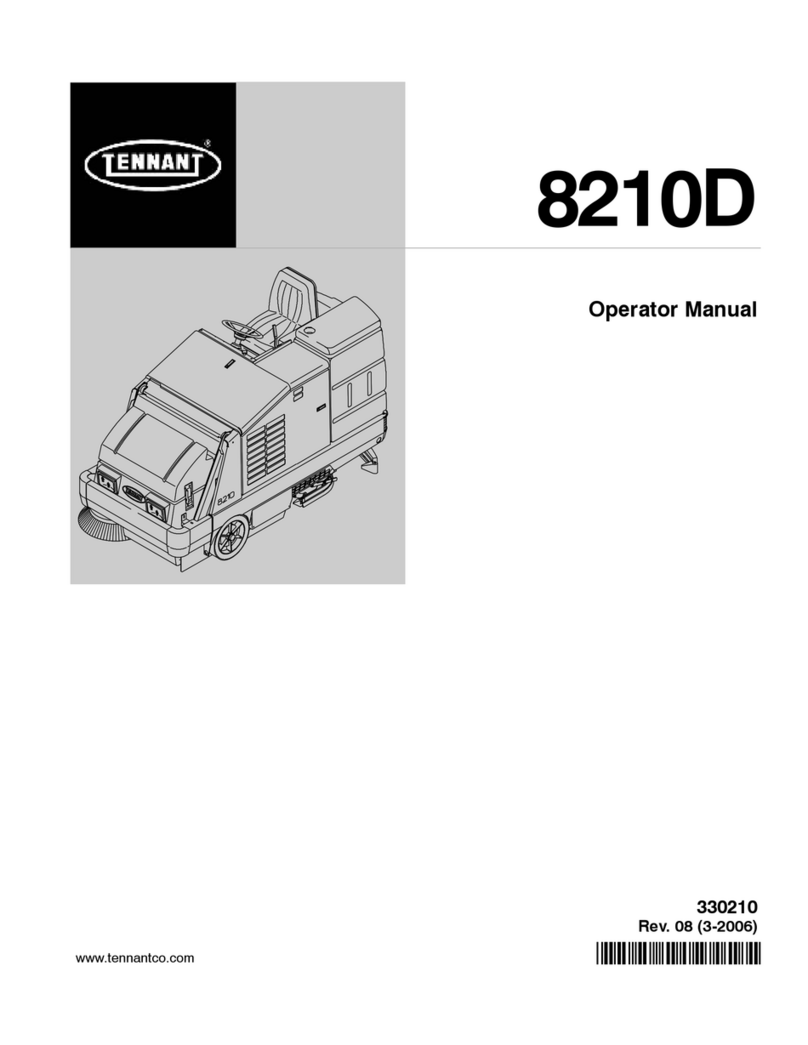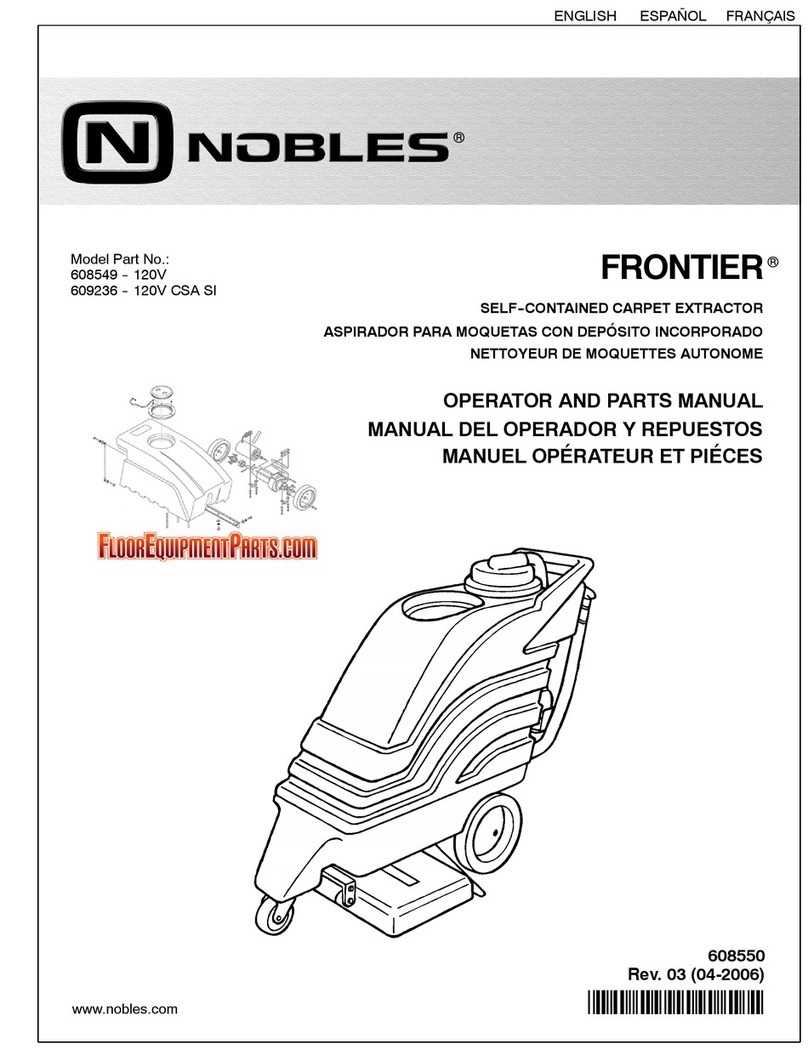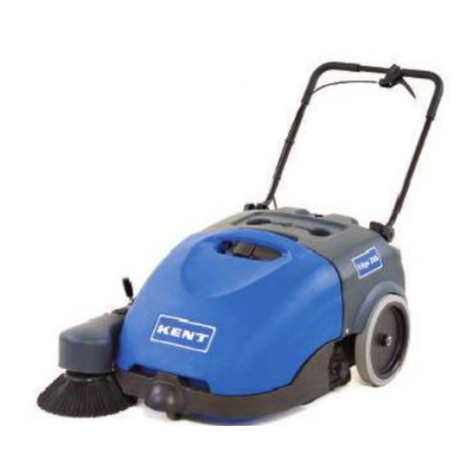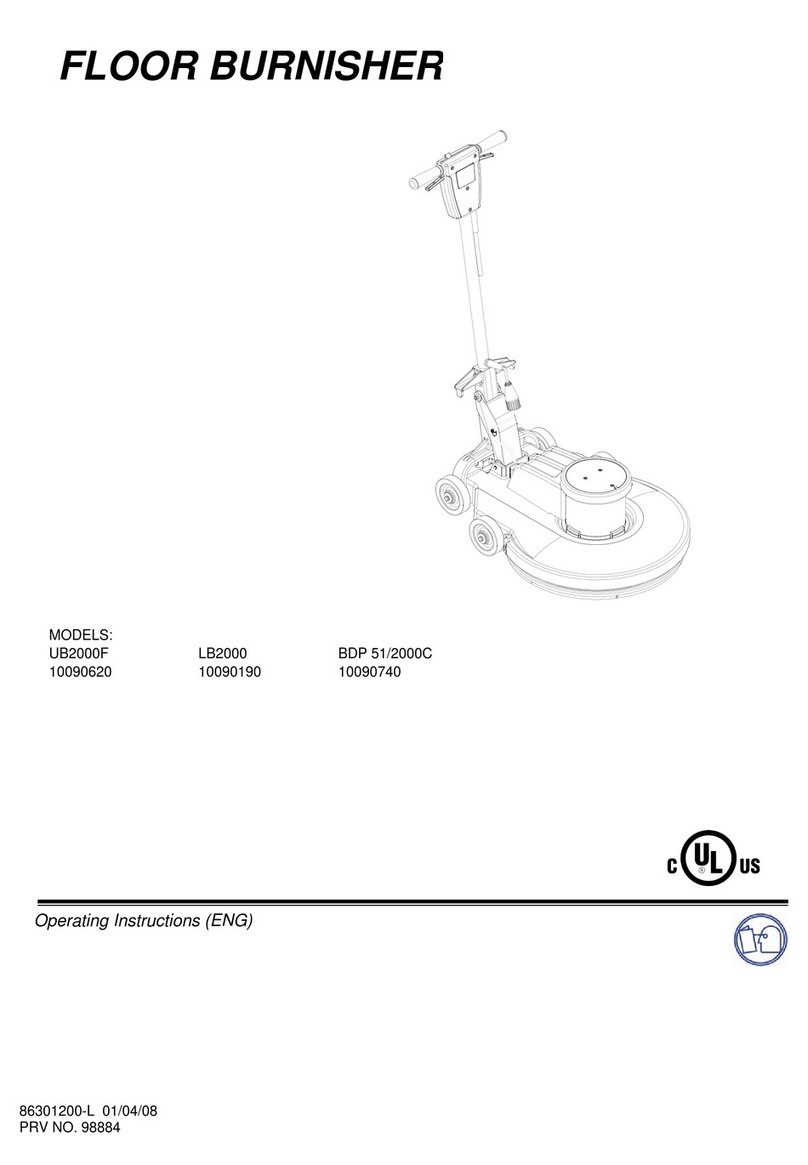EN
EN-5
1.2.b - Operator position
While using the machine, the operator is po-
sition at the rear of the machine with his/her
hands on the handle.
1.2.c - Protective clothing
- Use protective clothing as indicated in the
standards in force in the country in which
the machine is used.
1.2.d - General warnings before
use
- Before using the machine, check that the
fixed safety guards (covers) are always
correctly secured in position.
1.2.e - General warnings while using
the machine
- If the machine makes strange noises, stop
it immediately and identify the cause.
- Do NOT abandon the machine on sur-
faces which slope by more than 2%.
- While using the machine, do not knock
into shelving or cupboards.
- It is forbidden to use the machine out-
doors or on public roads.
- If possible, use the machine in environ-
ments where no persons are present;
in the present of unauthorised persons,
warn them to move away before using
the machine.
- Do not use the machine in environments
with the presence of corrosive or salty
substances.
- Do not use the machine in explosive en-
vironments (ATEX).
Only for “E” version
- It is not advisable to use an adaptor, mul-
tiple sockets, or an extension cord.
- If the electrical cord of this appliance is
damaged, it must be replaced by an Au-
thorized Customer Service Centre.
- Ensure the electrical cable is kept away
from the brush during machine operation.
It poses the danger of winding itself on
the brush.
1.2.f - General warnings about the
batteries
- Use appropriate personal protection
equipment to avoid contact with the skin
(see standards in force in the country in
which the machine is used).
- Do not inhale the vapour: it is danger-
ous.
- It is forbidden to smoke and/or use na-
ked flames within 2 metres of the battery
during charging, in the charging area and
while the battery is cooling after charg-
ing.
- Report any liquid leaking from the
battery:
leaks are dangerous and highly pollut-
ing.
1.2.g - General warnings during
maintenance
- Disconnect the batteries/electric cable
before performing maintenance and re-
pair operations.
- Do not rest tools and metal objects on the
batteries; danger of short circuits.
- Do not use aggressive detergents, acid,
lye etc. during cleaning and washing and
take particular care with electrical parts.
- Do not wash the machine with direct or
pressurised jets of water.
- When the machine must be lifted for any
maintenance operations, it is necessary
to work safely by placing fixed supports
underneath it.
- Contact an authorised support centre
for repairs and request ORIGINAL spare
parts only.
1.2.h - General warnings in the
event of a fire
- In the event of a fire, use approved pow-
der extinguishers only; do NOT use water
to put out the fire.

